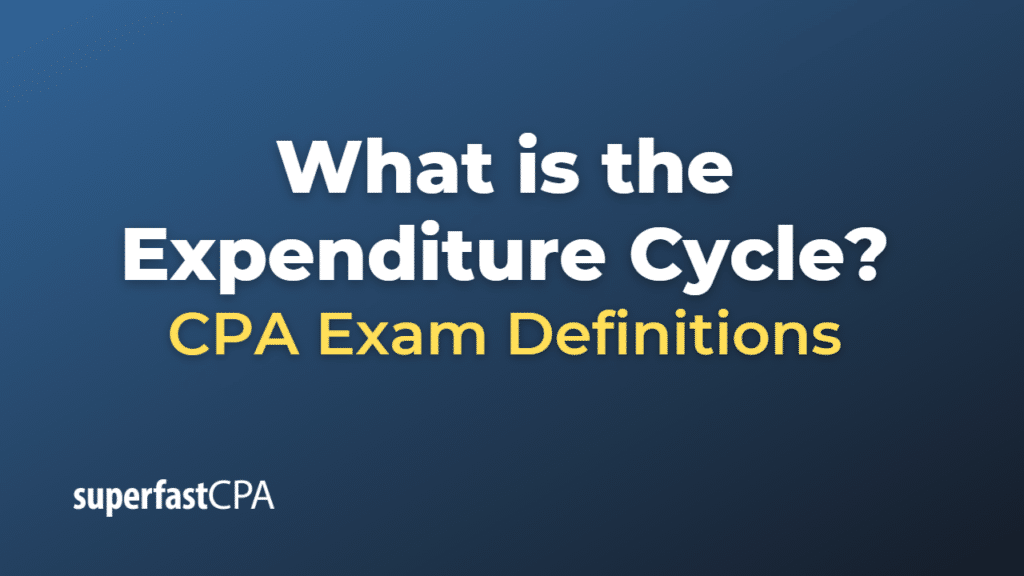Expenditure Cycle
The Expenditure Cycle is a part of the business process that involves the activities and procedures in purchasing necessary goods or services and making payments for them. It is a component of a company’s overall management of its resources.
Here are the general stages in the expenditure cycle:
- Identification of Need and Purchase Requisition: This is the first step where the need for a certain product or service is recognized. Once identified, a purchase requisition is created, which is an internal document that authorizes the procurement department to look for suppliers that can fulfill the identified need.
- Vendor Selection and Purchase Order Issuance: The procurement department identifies potential suppliers, evaluates them, and chooses the one that offers the best terms. Then, a purchase order (PO) is issued to the selected supplier, which is a document specifying the types and quantities of products to be purchased along with the agreed price.
- Receipt of Goods or Services: Once the supplier delivers the goods or services, the company checks the delivery against the purchase order and the invoice. The received items are then recorded into the inventory.
- Invoice Approval and Payment: The invoice from the supplier is verified against the goods or services received and the original purchase order. If everything matches up, the invoice is approved for payment. The payment is then processed, and the transaction is recorded in the accounts payable.
- Record Keeping: All transactions and documents related to the expenditure cycle are recorded and kept for future reference and audit purposes.
These processes help ensure that a company is efficiently managing its resources, getting the best value from suppliers, avoiding fraud, and complying with financial and legal requirements. The effectiveness of the expenditure cycle can significantly impact a company’s profitability and operational efficiency.
Example of the Expenditure Cycle
Let’s consider an example of a restaurant going through the expenditure cycle:
- Identification of Need and Purchase Requisition: The head chef at the restaurant realizes that they are running low on certain ingredients – let’s say tomatoes and onions. The chef creates a purchase requisition for these items and sends it to the restaurant’s manager.
- Vendor Selection and Purchase Order Issuance: The manager checks their list of trusted suppliers for produce. They choose a supplier that offers the best quality at the most reasonable price. The manager then sends a purchase order to this supplier, detailing the types and quantities of the products needed along with the agreed price.
- Receipt of Goods or Services: A few days later, the supplier delivers crates of tomatoes and onions to the restaurant. The manager checks the delivery against the purchase order and the supplier’s invoice to make sure the right items and quantities were delivered and that the prices match.
- Invoice Approval and Payment: Once the manager confirms that the delivery matches the purchase order and the invoice, they approve the invoice for payment. The restaurant’s accountant then processes the payment to the supplier and records the transaction in the accounts payable.
- Record Keeping: All the documents related to this transaction – the purchase requisition, the purchase order, the delivery receipt, the approved invoice, and the payment record – are properly filed and stored for future reference and audit purposes.
This expenditure cycle ensures the restaurant has a continuous supply of necessary ingredients while maintaining proper financial control and record-keeping.













